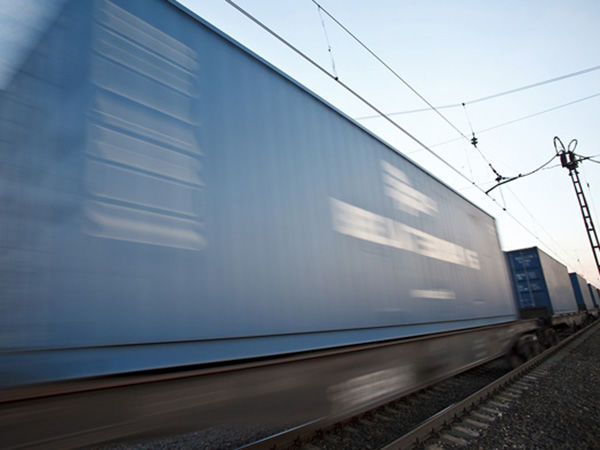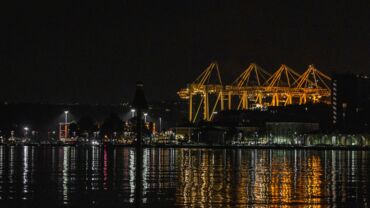Thailand has signed 12 agreements (6 bilateral and 6 multilateral) with 9 FTAs that are currently under negotiations or under the direction of doing so. These agreements could have a huge impact on Thailand future trade and investment in years to come.
The agreement between ASEAN and China (ACFTA), begun in January 2004, has since created the world’s largest free trade area of 1.7 billion consumers with a total gross domestic product (GDP) of around U.S. $2 trillion and a total trade volume (import and export) of around U.S. $1.2 trillion. This agreement has had a very positive impact on Thailand’s economy.
According to the Ministry of Commerce, China (including Hong Kong) is by far the number one trading partner for Thailand with a total trade value of U.S. $79 billion in 2015, followed by Japan at U.S. $51 billion, and the United States at U.S. $38 billion. The remaining trade partners in the top ten are all neighbors of Thailand in ASEAN and Asia Pacific: Malaysia, Singapore, Indonesia, Australia and Vietnam.
By comparison with other ASEAN members, in particular the regional neighbors such as Singapore, Thailand lags behind and has less FTAs in force (and hence less FTA trading partners). Singapore has currently around 20 FTAs in force and more than 31 trading partners across the globe from the Americas (U.S., Costa Rica, Peru, Chile, Panama), Europe (EU and EFTA) through Jordan and the Gulf Countries (GCC) or regions.
In terms of international ranking for trade and investment, Thailand is ranked as number 49 (out of 189 economies) in the World Bank’s Ease of Doing Business 2016 Chart. According to the ranking, and compared to the year earlier, almost all the difficulties have increased including Thailand’s trading across border concerns (which was 55 last year and 56 this year). For example, Supply Chains have historically noted obstacles generally associated with trade facilitation of physical infrastructure, as well as the administrative hurdles and delays in Thailand’s’ customs and import-export processes. This delay has been most prevalent in regards to moving standard cargo out of the factory gate to the port and then the added process with the administrative and port requirements until the cargo is loaded onto a ship. Thailand continues to address the concerns impacting trade facilitation, and continuously looks for ways to improve the processes of moving product in and out of country.
What has been recently discussed in Thailand among many industries and businesses is the world’s next largest free-trade bloc. The Trans-Pacific Partnership Agreement (TPP) is by estimation going to account for around 40 per cent of Thailand’s trading value. 10 per cent of this value will be as a direct result from the three America’s economies: the United States, Canada and Mexico. None of these countries currently are Thailand FTA partners, making the TPP more appealing to be adopted. However, as noted with all concerns globally vocalized on the TPP, there is a common concern voiced from Thailand’s private sector that Thailand could potentially lose its competitiveness in terms of import and export and investment attractiveness to other TPP current members, potentially harming the country’s growth; already noting sluggish movement the last few years.
Trade Facilitation and Thailand’s FTA Utilization Requirements
FTA’s are not simply about import duty reduction and duty elimination for trade in goods, but is a key catalyst for long term investment and growth in the participating countries. Most FTAs also have clauses which can help businesses gain greater market access and enforce restrictions to protect their investments and intellectual property, while expanding upon business opportunities in terms of price competitiveness, market and business development, investment expansion and government procurement.
In particular, the rule of origin of material source of product criteria that is used to prove that the good is actually originating from and within a particular economy helps domestic industries sustain their operations as well as the domestic practice and production standard to meet the international requirements.
In addition to these examples, there is a specific FTA term called “Ratchet Mechanism” or “Automatically binds unilateral liberalization of new services under that particular agreement”. This mechanism if it is written in the FTAs clause is simply a means that, in particular for the trade in services and investment parts, any future changes or improvements on the domestic laws, policies or regulations is locked and cannot be replaced by any changes that are more restrictive than the previous conditions. Thus this mechanism is built to ensure that actions under the domestic laws become progressively beneficial
There are certain rules that most exporters should be aware of and comply with when utilizing FTAs and applying for the certificate of origin to benefit from tariff privileges.
- Preferential Rules of Origin (Wholly Obtain, Substantial Transformation: Change in Tariff Classification Rule, Value Added Rule and Process Rule) and
- Specific Definitions (Minimal Operations Rule, De Minimis Ratio Rule), etc.
In addition to these rules, exporters must be able to specify their products tariff classifications precisely as well as understand their trade flows. This has been a difficult undertaking for Thai businesses as experienced during the time the new version (2012) of the Thailand HS code changed. Thai customs required the exporter (and importer) to indicate the product classification under the new version which sometimes differed from the previous version. During this time, and according to the rules, the Country of Origin (C/O) forms still required the old version of the HS code (2007), which had different details in the customs declaration. The obligation for Thai businesses was to meet the requirements of a 2012 tariff change with documentation that was 5 years outdated. Because the process was difficult, some exporters did not wait to get the C/O issued in time and skipped the process.
Skillfully navigating all of these preferential rules, in particular for the Thai exporters (and importers) ensures that they are able to reduce the errors of non-compliance and to utilize the FTAs properly and effectively, providing immediate and long term economic and financial benefits. Added to skillful navigation is the ability to interpret the rules, and meet the changes while steadily moving their product across borders.
Thailand exports account for a very large portion of the country’s GDP(around 70% during the last 3 decades according to the World Bank’s Data which is reasonably high compare to Japan of around 15%, 20% of Australia, or 45%of Germany). By focusing on changes to expedite exports, the country will expand at their full potential by raising export income from major markets and new high-potential markets. This effort will also promote Thailand’s border and regional trade with FTAs as a key factor in the plan to strengthen economic linkages with its major and regional trading partners.
Learn more about ONESOURCE Global Trade
Sources
[i] http://www.doingbusiness.org/data/exploreeconomies/thailand/
[ii] http://tdri.or.th/en/tdri-insight/thai-exports-in-dire-straits-unless-govt-joins-tpp/







